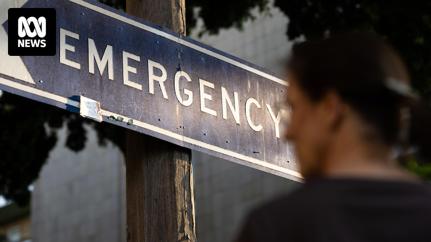Understanding the Crisis
In a revealing report aired on ABC’s 4 Corners, mental health professionals, including psychiatrists and nurses, have sounded the alarm over a crisis in New South Wales' mental health system. Alarmingly, patients suffering from severe mental distress have reported delays of two to three days in emergency departments (EDs) before receiving necessary care. This situation reflects a deeper, systemic issue with mental health services not only in New South Wales but across Australia.
Resource Allocation in Mental Health
Australia allocates just over 7% of its health budget to mental health, yet mental health issues combined with alcohol and drug dependencies account for approximately 15% of the national burden of disease. This stark contrast highlights significant challenges not only in funding but also in resource allocation. It raises the pressing question: How did the system reach this critical state, and what measures can be taken toward improvement?
The Shift in Mental Health Care Paradigm
During the 1980s, psychiatric deinstitutionalization aimed to replace traditional psychiatric facilities with community-based mental health services. While many institutions were closed due to their inefficiencies and abusive practices, the reality has shifted markedly. Instead of steering mental health care into community settings, many services have relocated to hospitals, especially EDs, leading to an over-reliance on these facilities for care.
Currently, over 80% of state and territory mental health funding is funneled into hospital care—amounting to A$6.5 billion out of an A$8 billion total mental health budget for 2022–2023. This allocation further underscores the need for reform, as recent reports indicate that individuals presenting to EDs are arriving in increasingly critical condition and experiencing even longer wait times for treatment.
The Role of Community-Based Care
Evidence has continuously demonstrated that effective community-based care not only provides necessary support but can also alleviate the pressure on EDs. However, the current state of community mental health services often falls short, with many interactions reduced to brief phone calls to check on medication adherence. In fact, data from 2022-2023 indicated that out of 9.4 million contacts with community mental health services, four million lasted less than 15 minutes. Furthermore, clinical staff are only spending about 20% of their time with clients, which is woefully insufficient for meaningful mental health support.
Proposed Solutions
Several solutions have been identified but largely ignored in policy implementation. These include:
- Multidisciplinary Approaches: Models like assertive community treatment which integrates various forms of clinical and psychosocial support within clients' homes.
- Alternative Service Models: Initiatives proposed by the Australian College of Emergency Medicine including safe havens, mental health nurse liaison services, and dedicated teams for the homeless.
- Successful Pilot Programs: Programs such as the Housing and Accommodation Support Initiative in New South Wales, which has demonstrated a 74% reduction in mental health admissions over two years.
- Urgent Mental Health Care Centres: Facilities like Adelaide’s Urgent Mental Health Care Centre offer 24/7 services and provide a community-oriented, safe space for individuals in crisis.
- Step-Up Step-Down Services: Designed for individuals whose needs are too complex for standard primary care yet not severe enough for hospitalization.
The Funding Gap
Despite the potential of these community solutions, funding for psychosocial supports remains significantly low—comprising only about 6% of total mental health expenditures. The current funding structures have left nearly half a million Australians with severe or moderate mental health needs unable to access essential care, ultimately hindering their recovery.
Workforce Challenges and Future Planning
Concerns have been raised regarding workforce shortages and issues surrounding psychiatrist compensation. Future mental health planning must address these workforce dynamics and emphasize the importance of teamwork among various health professionals, including psychiatrists, psychologists, allied health workers, social service providers, and community organizations.
Final Thoughts
Addressing the over-reliance on hospital care and fostering a culture of early intervention and community-based mental health support requires concerted effort among all levels of government in Australia. By prioritizing community health services, enhancing treatment personalization, and ensuring accountability, Australia can work towards achieving a more effective, compassionate mental health care system.
Bias Analysis
Key Questions About This Article




